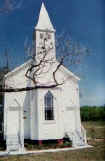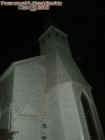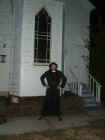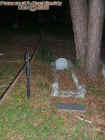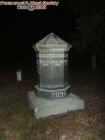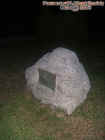|
|
||
|
The Lagrange church was established in a log schoolhouse built on the cemetery site in 1869. It was the first church between New Smyrna and Keywest. In 1872 a two story log building was built to replace the log schoolhouse. The church occupied the lower floor and the school was above it. The wood frame church or rather the one you see in the photos was built in 1893 and was a non-denominational with various faiths and ministers that would alternate the preaching. The cemetery which surrounds the church has many prominent well known pioneers to the area two of them are the Mims Family named after the town of Mims and Colonel Henry Titus whom had Titusville named after him. The church was the oldest protestant church between St. Augustine and Keywest even as today. This church is a not just a historical structure but a symbol to this countries past. It sits on one of the oldest highways in the country a time when people traveled horse and wagon. Many pioneers came to the area and faced many hardships or rather dangers to the Lagrange area. At the time the area was full of Indians and very few pioneers or white settlers rather. Of course Brevard County is home to many Indian mounds and lagoons. One of the first settlements to the area was started by the David Nathaniel Carlile family when he arrived from Mississippi in 1852. He brought his wife and ten children. Then eventually the Feasters, Cuylers, Norwoods, Singletons, and Warrens followed. These pioneers are buried surrounding LaGrange Church. So the cemetery was started more then likely before the church was erected. The LaGrange area not to far from the St. Johns River was a way for people and goods to be transported. Near by was an area called Salt Lake which was a landing where goods could be shipped and received within the LaGrange Community. The goods were pulled in a two wheeled cart that was pulled by men then eventually oxen did the pulling in the deep sand. The community then installed wood rails to roll the carts to the landing. The church was more then just a place of worship as it served a social center for the early pioneers. Although there was services and all day meetings it served as a social center. Food was served here like wild boars, venison, turkey and mullet served with cabbage palm, mangoes and sweet potato pie. This place sort of reminded me of when the pilgrims shared thanksgiving with the Indians. One of the longest serving ministers was Reverend William Chaudoin who served this church for 33 years and the LaGrange community. He died in 1904 and to honor him Chaudoin Hall at Stetson was named after him. Today this pioneer church and cemetery look at it did over a century ago. There is a real dismal feeling area lots of old stones surrounding this little wooden church just gives it a haunting feeling. Lots of history surrounds this place as it was a focal point for the La Grange Community! © By Rick-AngelOfThyNight
|
||
|
|
|





